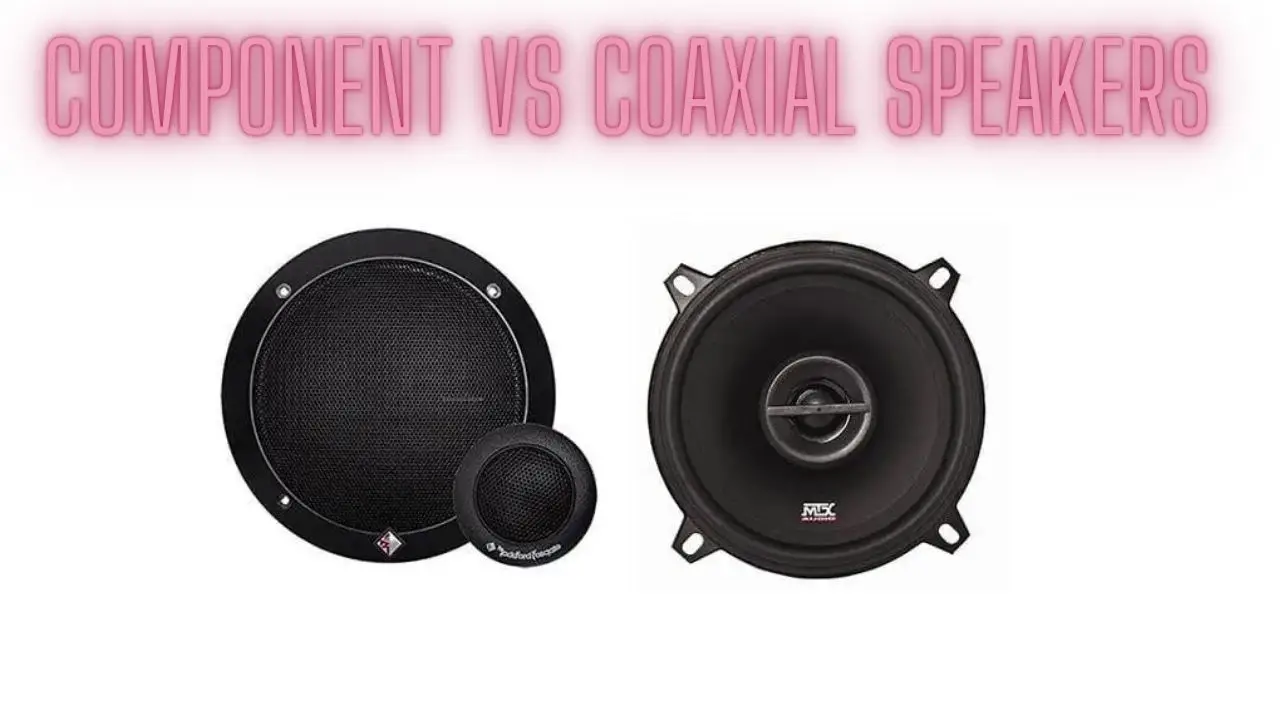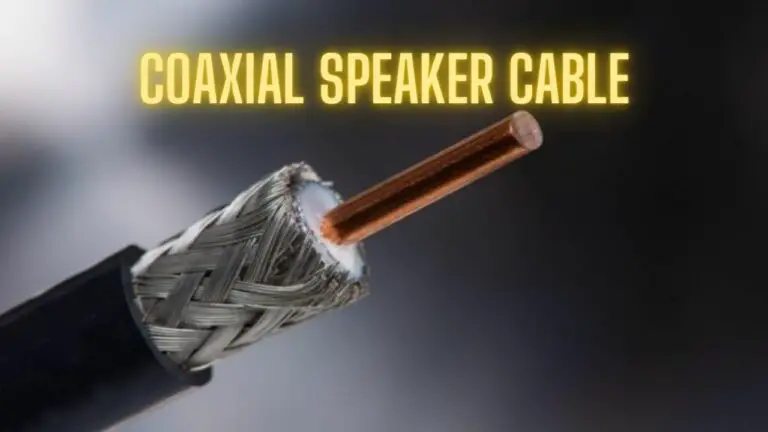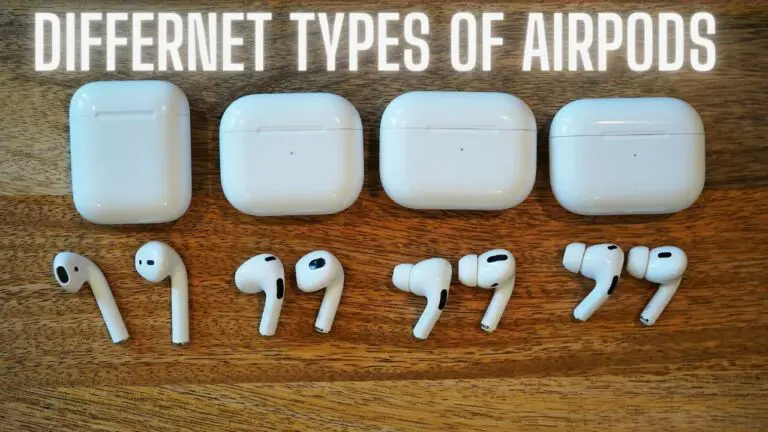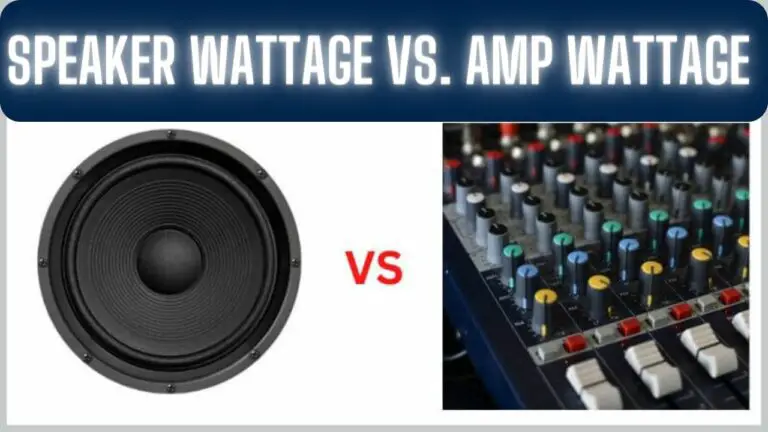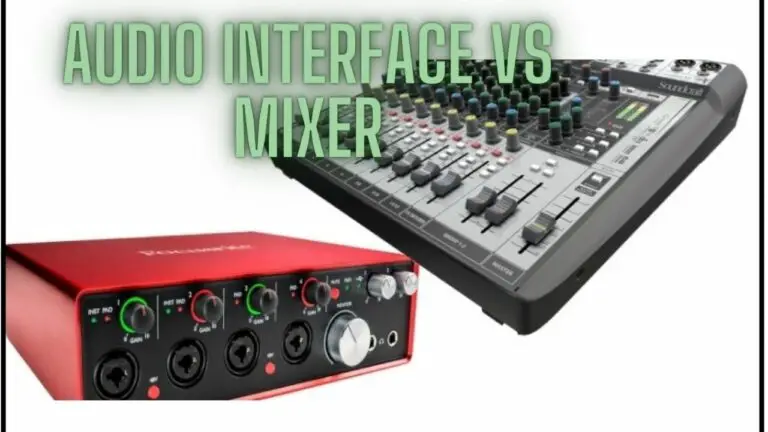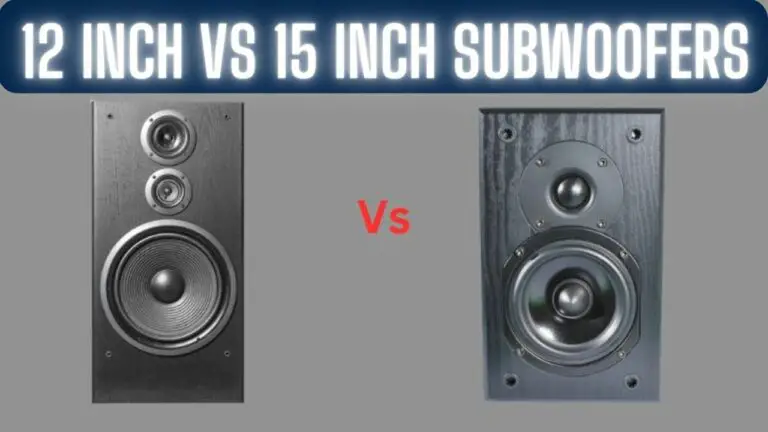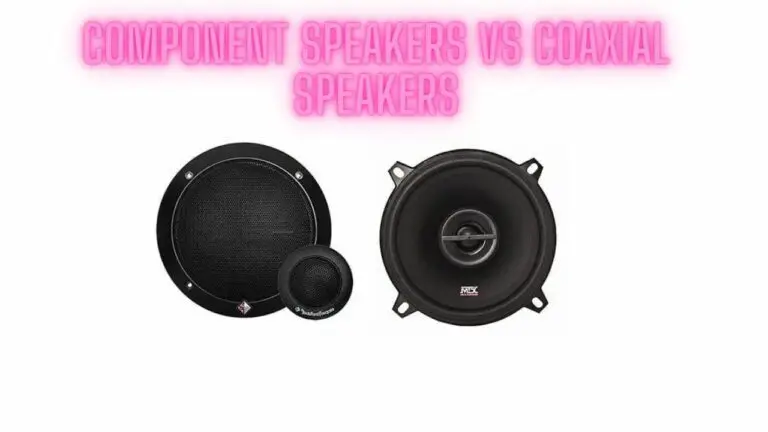Component Speakers vs. Coaxial Speakers for Car Audio: Types Of Car Speakers
Introduction
When upgrading your car audio system, the choice between component speakers and coaxial speakers is a critical decision that can greatly impact your audio experience. Both options have their own strengths and considerations. In this article, we’ll delve into the differences between component speakers and coaxial speakers, helping you make an informed choice that suits your car audio goals.
Component Speakers:
Definition: Component speakers consist of separate components for different frequency ranges – typically a separate woofer, tweeter, and sometimes a mid-range driver.
Advantages:
- Sound Quality: Component speakers offer superior sound quality due to the separation of frequency ranges, reducing distortion and allowing for better audio clarity.
- Customization: You can position the individual components in optimal locations, such as mounting the tweeters at ear level for improved imaging.
- Better Imaging: The separation of drivers enables better soundstage and imaging, making it feel like the music is coming from specific locations.
- Crossover Control: Component speaker systems often come with external crossovers that allow you to fine-tune the distribution of frequencies to each driver.
Considerations:
- Complex Installation: Installing component speakers requires more effort and expertise due to the separate components and potential modifications to your car’s interior.
- Higher Cost: Component speaker systems tend to be more expensive due to the separate drivers and crossovers.
Types of Component Speakers
Component speakers are designed to offer superior sound quality and customization by separating different audio frequency ranges into distinct components. Here are the common types of component speakers:
- 2-Way Component Speakers:
- Components: A 2-way system includes a separate woofer and a tweeter.
- Function: The woofer handles midrange and low frequencies, while the tweeter handles high frequencies.
- Advantages: Improved sound quality compared to full-range speakers, better audio separation, and the ability to position components optimally.
- 3-Way Component Speakers:
- Components: A 3-way system includes a woofer, a mid-range driver, and a tweeter as separate components.
- Function: Each driver is dedicated to a specific frequency range – woofer for lows, mid-range for mid frequencies, and tweeter for highs.
- Advantages: Even more precise audio separation and soundstage compared to 2-way systems, resulting in enhanced audio fidelity.
- 4-Way Component Speakers:
- Components: A 4-way system features a woofer, a mid-range driver, a tweeter, and an additional specialized driver (such as a super tweeter).
- Function: The additional driver further extends the frequency range and contributes to detailed sound reproduction.
- Advantages: Exceptional sound clarity and detailed audio across a broader frequency spectrum.
- 5-Way Component Speakers:
- Components: A 5-way system includes all the components of a 4-way system, along with another specialized driver.
- Function: The added driver can be a mid-bass driver or another specialized tweeter, further expanding the frequency response.
- Advantages: Extremely detailed audio reproduction, particularly suited for audiophiles and enthusiasts.
- 6-Way and Beyond Component Speakers:
- Components: Some advanced systems may include even more drivers for additional frequency separation and customization.
- Function: The added drivers contribute to ultra-precise soundstage and imaging.
- Advantages: Maximum customization and control over audio frequencies, suitable for high-end audio setups.
- Component Speaker Systems with External Crossovers:
- Components: These systems come with external crossovers that manage the distribution of frequencies to each driver.
- Function: External crossovers allow for fine-tuning and customization of audio frequencies, resulting in optimal sound quality.
- Active Component Speaker Systems:
- Components: Active systems include external crossovers, but also feature separate amplifiers for each driver.
- Function: The dedicated amplification for each driver allows for precise control over sound output and audio quality.
When selecting component speakers for your car audio system, consider factors such as sound quality, installation complexity, available space, and your desired level of audio customization. Each type of component speaker system offers varying degrees of audio precision and versatility, allowing you to tailor your car’s audio experience to your preferences.
Coaxial Speakers:
Definition: Coaxial speakers, also known as full-range speakers, combine multiple drivers (woofer, tweeter, sometimes mid-range) in a single unit.
Advantages:
- Simplicity: Coaxial speakers are easier to install since all components are integrated into a single unit, saving time and effort.
- Affordability: Coaxial speakers are generally more budget-friendly compared to component systems.
- Space Saving: If space is limited in your car’s interior, coaxial speakers can be a more practical option due to their compact design.
Considerations:
- Sound Quality Limitation: Coaxial speakers may not achieve the same level of sound quality and separation as component speakers, especially in terms of soundstage and imaging.
- Limited Customization: You have less control over the positioning of individual drivers, potentially affecting audio clarity and imaging.
Types of Coaxial Speakers
Coaxial speakers, also known as full-range speakers, come in various types and configurations to suit different audio preferences and car audio systems. Here are some common types of coaxial speakers:
- 2-Way Coaxial Speakers:
- Components: These speakers consist of a woofer and a tweeter integrated into a single unit.
- Function: The woofer handles midrange and lower frequencies, while the tweeter handles high frequencies.
- Advantages: Simple setup, suitable for basic audio upgrades.
- 3-Way Coaxial Speakers:
- Components: These speakers include a woofer, a mid-range driver, and a tweeter within a single unit.
- Function: The division of frequencies is more precise, resulting in better sound quality and separation.
- Advantages: Improved soundstage and audio clarity compared to 2-way speakers.
- 4-Way Coaxial Speakers:
- Components: In addition to a woofer, mid-range driver, and tweeter, these speakers include an extra driver, often referred to as a super tweeter.
- Function: The super tweeter handles the highest frequencies, enhancing the overall frequency response and sound detail.
- Advantages: Enhanced audio fidelity and a broader range of frequencies.
- 5-Way Coaxial Speakers:
- Components: These speakers include all the components of a 4-way system, along with an additional specialized driver.
- Function: The added driver could be a mid-bass driver or a specialized tweeter, further expanding the frequency range.
- Advantages: Extremely detailed sound reproduction across a wide frequency spectrum.
- Dual Voice Coil (DVC) Coaxial Speakers:
- Components: These speakers feature a single woofer with two separate voice coils.
- Function: The dual voice coils allow for more advanced wiring configurations, enabling greater flexibility in speaker connections.
- Advantages: Can be wired for different impedance levels or bridged amplifier setups.
- Component-Style Coaxial Speakers:
- Components: While not truly component speakers, these coaxial speakers aim to provide better separation by physically separating the woofer and tweeter within the same speaker housing.
- Function: Designed to mimic the soundstage benefits of true component speakers.
- Advantages: Improved soundstage and audio separation compared to standard coaxial speakers.
- Marine Coaxial Speakers:
- Features: These speakers are designed to withstand harsh marine environments, featuring water-resistant and UV-resistant materials.
- Function: They provide high-quality audio for boats, yachts, and outdoor watercraft.
- Oval/6×9 Coaxial Speakers:
- Shape: These speakers have an oval shape (6×9 inches) instead of the traditional round shape.
- Function: Oval speakers are often used in larger vehicles or where space for round speakers is limited.
- Advantages: They can provide improved bass response due to their larger size.
When choosing the type of coaxial speaker for your car audio system, consider factors like sound quality, space availability, and your specific audio preferences. Each type offers a different level of sound reproduction and features, so select the one that best matches your goals for upgrading your car’s audio experience.
Differences between Component Speakers and Coaxial Speakers
Component speakers and coaxial speakers are two distinct options for upgrading your car’s audio system. Each has its own advantages and considerations. Here’s a comparison of component speakers and coaxial speakers to help you make an informed choice:
1. Design and Configuration:
- Component Speakers:
- Design: Component speakers consist of separate components – woofer, tweeter, and sometimes mid-range driver – installed separately.
- Configuration: Components are positioned strategically for optimal soundstage and imaging.
- Advantages: Enhanced audio separation and clarity due to dedicated components for different frequency ranges.
- Coaxial Speakers:
- Design: Coaxial speakers integrate multiple drivers (woofer, tweeter, mid-range) into a single unit.
- Configuration: All drivers are mounted in the same location, limiting customization.
- Advantages: Easier installation, compact design, suitable for basic upgrades.
2. Sound Quality:
- Component Speakers:
- Sound Quality: Generally provide superior sound quality due to separate drivers handling distinct frequency ranges.
- Advantages: Improved audio clarity, detailed sound reproduction, and better soundstage.
- Coaxial Speakers:
- Sound Quality: Offer decent sound quality but might not achieve the same level of separation and audio precision as component speakers.
- Advantages: Suitable for casual listeners seeking convenience and satisfactory audio quality.
3. Customization:
- Component Speakers:
- Customization: Components can be positioned optimally for enhanced audio imaging and clarity.
- Advantages: Tailor the audio experience to your preferences and vehicle’s interior layout.
- Coaxial Speakers:
- Customization: Limited customization due to fixed driver positions within the same unit.
- Advantages: Straightforward installation without the need for extensive adjustments.
4. Installation Complexity:
- Component Speakers:
- Installation: More complex installation due to separate components and potential modifications.
- Advantages: Offers advanced users the opportunity for precise setup and tuning.
- Coaxial Speakers:
- Installation: Easier and less time-consuming installation, suitable for DIY enthusiasts and beginners.
- Advantages: Quick and straightforward setup.
5. Audio Enthusiasts vs. Casual Listeners:
- Component Speakers:
- Suitability: Ideal for audio enthusiasts and those seeking the best sound quality.
- Advantages: Offers advanced customization, superior sound quality, and detailed audio reproduction.
- Coaxial Speakers:
- Suitability: Suited for casual listeners looking for an audio upgrade without extensive customization.
- Advantages: Affordable, convenient, and suitable for basic audio improvements.
Choosing the Right Option:
- Choose Component Speakers if: You’re an audiophile seeking the best possible sound quality, and you’re willing to invest in both the speakers and the installation process. Component systems are ideal for those who value fine-tuning and customization.
- Opt for Coaxial Speakers if: You want a simpler installation, budget-friendly option, and satisfactory audio quality for casual listening. Coaxial speakers are a suitable choice for those who prioritize convenience and affordability.
Sound Quality
- Component Speakers:
- Component speakers typically offer higher sound quality compared to coaxial speakers.
- They feature separate drivers for different frequency ranges (woofer for bass, tweeter for highs, and sometimes a mid-range driver), allowing for better audio reproduction and clarity.
- The separate placement of drivers allows for more precise sound imaging and staging, resulting in a more immersive listening experience.
- Component systems often come with external crossovers, which help in directing specific frequency bands to the appropriate drivers, further enhancing sound quality and minimizing distortion.
- Coaxial Speakers:
- Coaxial speakers are designed with all drivers (woofer, tweeter, sometimes mid-range) integrated into a single unit, usually mounted in a single location (such as a car door).
- While coaxial speakers offer convenience and ease of installation, they may not achieve the same level of sound quality as component speakers.
- The integration of drivers into a single unit can lead to compromises in sound clarity, imaging, and separation of frequencies.
- Coaxial speakers are still capable of producing good sound quality, especially in budget-friendly setups or for casual listeners who prioritize convenience over audiophile-grade sound.
In summary, component speakers tend to offer superior sound quality compared to coaxial speakers due to their design with separate drivers and external crossovers. However, the choice between component and coaxial speakers ultimately depends on your preferences, budget, and the specific requirements of your car audio system.
Use Cases and Recommendations
- Component Speakers:
- Recommended for audiophiles and enthusiasts seeking the highest level of sound quality and audio performance in their car audio system.
- Ideal for individuals who prioritize precise sound imaging, clarity, and separation of frequencies.
- Suitable for advanced installations where customization and tuning capabilities are desired, such as competitions or high-end custom car audio setups.
- Best suited for vehicles with ample space for installation, as component systems often require separate mounting locations for the tweeters, woofers, and crossovers.
- Coaxial Speakers:
- Recommended for casual listeners or those seeking a budget-friendly option without sacrificing too much in sound quality.
- Ideal for straightforward installations where simplicity and convenience are paramount, such as factory speaker replacements or basic aftermarket upgrades.
- Suitable for vehicles with limited space or where extensive modifications are not feasible, as coaxial speakers offer a compact and integrated design that fits into existing speaker locations.
- Good choice for everyday commuting or general use, providing satisfactory sound reproduction for most music genres and listening environments.
- Hybrid Systems:
- Some car audio enthusiasts opt for hybrid setups that combine both component and coaxial speakers.
- This approach allows for the best of both worlds, with component speakers installed in the front for enhanced sound quality and imaging, and coaxial speakers used in the rear for fill and ambiance.
- Hybrid systems offer a balance between performance and convenience, catering to different listening preferences and budget constraints.
- System Integration:
- Regardless of the speaker type chosen, it’s essential to consider the overall integration of the car audio system, including amplifiers, signal processors, and acoustic treatments.
- Proper system integration, along with careful tuning and setup, can significantly impact the final sound quality and performance of the car audio system, regardless of the speaker type chosen.
In conclusion, the choice between component and coaxial speakers depends on your specific needs, preferences, and budget. Component speakers are recommended for audiophiles and enthusiasts seeking the highest level of sound quality and customization options, while coaxial speakers offer convenience and affordability for everyday use. Consider your priorities and the overall goals of your car audio system when making your decision.
Component Speakers vs. Coaxial Speakers FAQS
What is the primary difference between component and coaxial speakers?
The main difference lies in their design and audio configuration. Component speakers consist of separate components (woofer, tweeter, sometimes mid-range) for optimal sound quality and customization. Coaxial speakers integrate multiple drivers (woofer, tweeter, mid-range) into a single unit for simpler installation.
Which type of speaker offers better sound quality?
Component speakers generally provide superior sound quality due to their separate drivers that handle specific frequency ranges. This results in improved audio clarity, soundstage, and detailed reproduction.
Are component speakers harder to install than coaxial speakers?
Yes, component speakers are usually more complex to install. They require separate mounting of components, potential modifications to your vehicle’s interior, and proper tuning. Coaxial speakers offer a simpler installation process.
Can I achieve customization with component speakers?
Yes, component speakers allow for advanced customization. You can position individual components optimally for enhanced audio imaging and tailor the sound to your preferences.
Are coaxial speakers suitable for casual listeners?
Yes, coaxial speakers are suitable for casual listeners who want a convenient audio upgrade without intricate adjustments. They offer decent sound quality and straightforward installation.
Do component speakers cost more than coaxial speakers?
Yes, component speaker systems tend to be more expensive due to their separate components and customization potential. Coaxial speakers are generally more budget-friendly.
Can I convert my coaxial speakers to component speakers?
Converting coaxial speakers to component speakers involves more than just switching components. It may require modifications to your vehicle’s interior, making it a complex process.
Which speaker type is best for audiophiles?
Audiophiles often prefer component speakers due to their superior sound quality, detailed audio separation, and ability to customize the soundstage.
Do both types of speakers offer good sound quality?
Both component and coaxial speakers offer sound quality improvements over stock factory speakers. Component speakers, however, tend to offer better audio precision and clarity.
Can I install either type of speaker myself?
Both types of speakers can be installed by DIY enthusiasts, but coaxial speakers are generally easier to install due to their integrated design. Component speaker installation might require more technical expertise.
Which type of speaker is best for a basic audio upgrade?
Coaxial speakers are suitable for basic audio upgrades. They provide improved sound quality over stock speakers and offer convenient installation.
Can I mix component and coaxial speakers in the same system?
Mixing component and coaxial speakers within the same system is possible, but it might affect audio balance and quality. It’s best to choose one type for consistency.
Conclusion:
Whether you choose component speakers or coaxial speakers, the decision ultimately hinges on your audio preferences, budget, and installation expertise. Consider factors like sound quality, customization, ease of installation, and your car’s interior layout when making your choice. Regardless of which option you select, a well-chosen speaker upgrade can significantly enhance your car audio experience.

